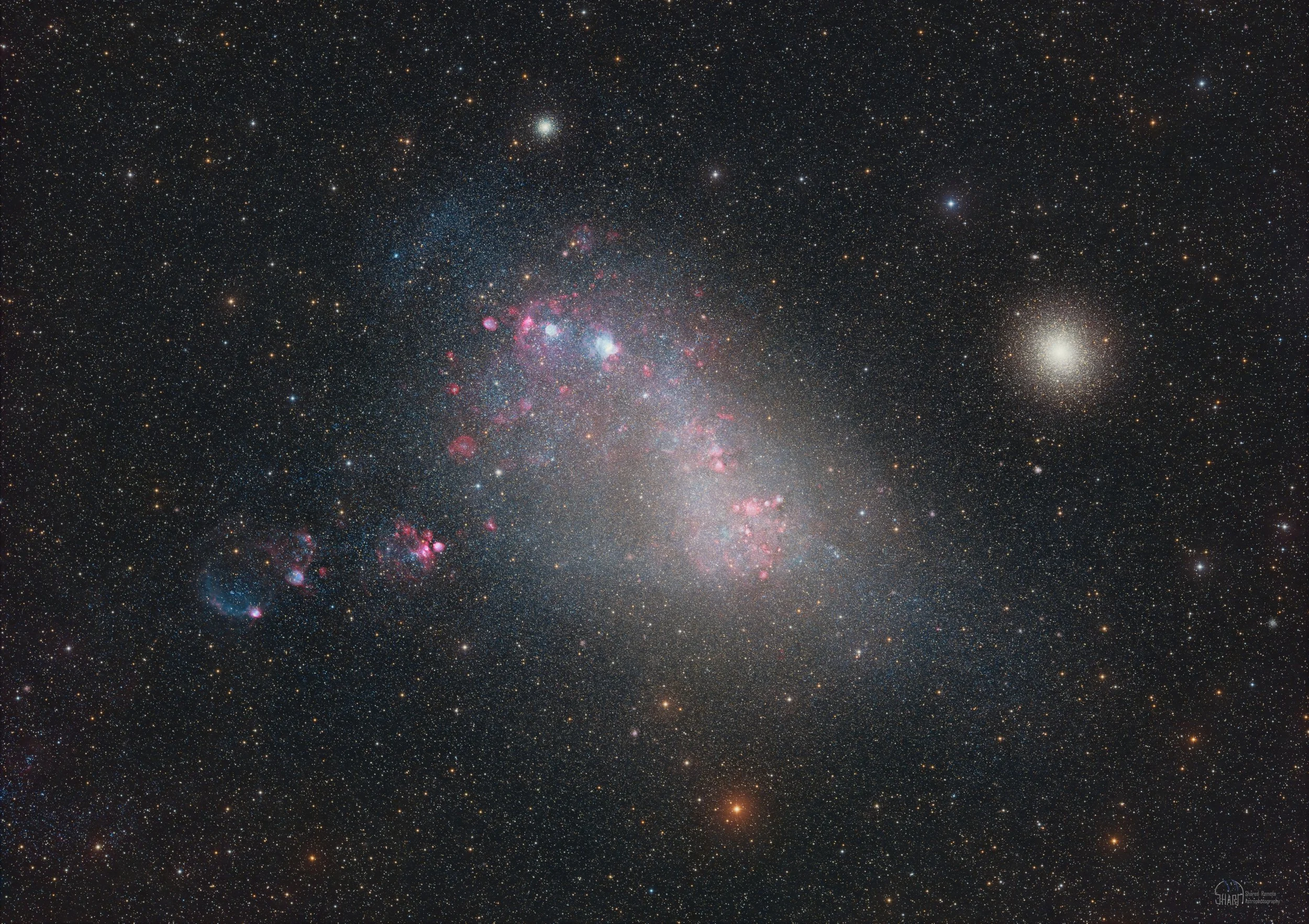
AAPOD2 Image Archives
Small Magellanic Cloud (NGC 292)
The Small Magellanic Cloud (SMC), cataloged as NGC 292, is a dwarf galaxy located approximately 200,000 light-years away in the constellation Tucana. As one of the closest galactic neighbors to our Milky Way, the SMC serves as a unique laboratory for studying stellar evolution and galactic interactions. Measuring about 7,000 light-years in diameter, this irregular galaxy is home to vibrant star-forming regions, such as NGC 346, and ancient globular clusters like 47 Tucanae that orbit its vicinity.
This image captures the SMC in stunning detail, revealing its scattered clusters, intricate nebulae, and the faint tendrils of gas and dust that bridge the SMC to its larger companion, the Large Magellanic Cloud, via the Magellanic Bridge. From the Southern Hemisphere, particularly in pristine locations like the Atacama Desert or rural Australia, the SMC is visible to the naked eye as a faint, cloudy patch in the night sky.
The galaxy’s irregular structure and its role as a gravitational partner to the Milky Way make it a focus of both amateur and professional astronomers. By studying galaxies like the SMC, scientists unravel clues about the evolution of galaxies and the cosmic interactions shaping them over billions of years.
The Small Magellanic Cloud
The Small Magellanic Cloud (SMC), a celestial jewel in the southern hemisphere, graces the night sky with its ethereal presence. Nestled among the distant stars, this dwarf irregular galaxy, a satellite of our Milky Way, captivates astronomers and stargazers alike. With an approximate distance of around 200,000 light-years, the SMC unveils a tapestry of stellar marvels, from sprawling nebulae to clusters of newborn stars. Its unique position allows astronomers to study cosmic phenomena with a distinct perspective, offering insights into the evolution of galaxies and the interplay of celestial forces.



